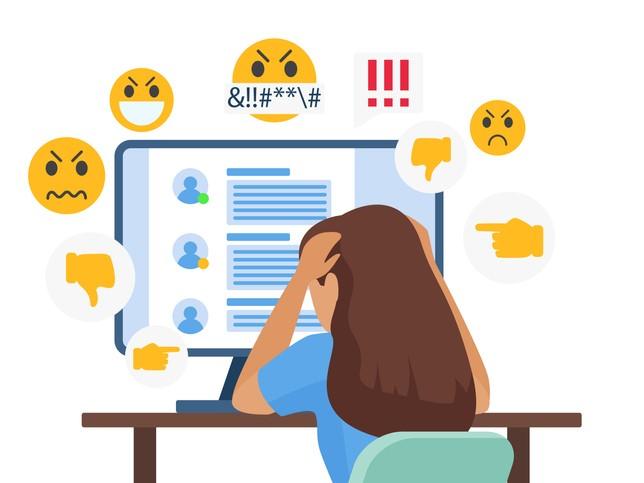
Transform digital pedagogy with social media
In order to ready the classroom for the digital age, integrate social media platforms into your teaching. Here’s how to do it

You may also like
Popular resources
The digital age has transformed many aspects of our lives, and education is no exception. Social media, often seen as a distraction, is now being used as a powerful tool for teaching. My research introduces a new framework, A Taxonomy of Social Media for Learning (TSML), to effectively integrate social media into class practice, increase student engagement and improve learning outcomes by aligning teaching with the demands of the digital age. Here, I’ll outline how TSML can change the learning landscape.
The first step in learning
The journey begins with viewing, the foundational step of TSML. Here, students explore the course content on a social media page before formal learning begins. Lecturers share a variety of materials – readings, summaries, videos and more – on a group page, allowing students to familiarise themselves with the course. This initial exposure sets the stage for deeper learning, ensuring that students understand the basics before moving on.
Engaging with content
Once students are familiar with the course material, the next step is posting. This is where the actual teaching takes place. Lecturers post detailed explanations of topics, clarifications of concepts and additional resources such as relevant articles, videos and readings to enhance students’ understanding. For example, I posted some examples of previous years’ materials to demonstrate how to prepare, present and reflect on the criteria when creating and delivering materials.
How to preserve academic credibility when engaging with social media
This stage is critical for deepening student understanding. By breaking down complex concepts and providing illustrative examples, lecturers ensure that students can fully grasp the material. Engaging students through a variety of techniques and interactive content helps maintain their interest and facilitates better learning.
Communication and collaboration
Interacting takes learning to an active level, encouraging students to engage with their peers and tutors. Through group discussions, often facilitated on the social media group page, students apply their knowledge in a practical setting. This allows for collaborative work and real-time feedback from peers and lecturers. This phase promotes critical thinking, teamwork and effective communication – skills essential for real-world problem solving. Sharing feedback and collaborating helps students deepen understanding and refine work.
Deepening understanding
In the analysing phase, students delve deeper into material by breaking it down into smaller parts and understanding the connections between concepts. This helps separate fact and opinion, compare ideas and identify underlying structures. Analysing their own and other students’ work, students develop a nuanced understanding of the material, preparing them for innovative and informed projects.
Improving quality
Evaluating is a key component of TSML and focuses on improving the quality of student work through feedback. Students evaluate their own and their peers’ work against set criteria, while lecturers provide additional insight. This process helps students to identify strengths and areas for improvement, fostering a growth mindset.
- How to preserve academic credibility when engaging with social media
- Spotlight collection: how to make social media a friend, not a foe
- Using knowledge graphs to integrate social media into curricula
Authentic assessment methods, such as self- and peer-assessment, are particularly effective in this context. Social media platforms facilitate this by providing timely and constructive feedback that can significantly improve learning outcomes.
Showcasing work
The final stage, curating, involves the presentation of revised and polished work on social media. This process adds value by allowing students to refine their work based on feedback from previous stages. Curating content on social media gives students the opportunity to showcase their innovative projects, learning experiences and engage with a wider audience. The use of hashtags and other interactive elements can further increase engagement and visibility. This stage not only promotes visual learning and critical thinking, but also gives students a sense of pride and achievement.
Which platforms work best?
Before diving into the magic of e-learning, decide on the most appropriate of these digital tools. Remember that social media trends can be as different between countries as night and day. In the UK, Facebook, Instagram and Snapchat reign supreme. In Turkey, it’s all about Instagram and Facebook, with Snapchat on the sidelines. Identify your audience’s preferred platform, making social media learning easier.
Reducing risks
When using the TSML in the learning process, consider the risks and issues inherent in social media platforms. Some students may be reluctant to join social media platforms for educational purposes because of privacy concerns. To persuade these students and to protect their privacy, inform them how to adjust their privacy settings to protect their personal and sensitive information from third-party online users and those who wish to harass others. Also, to mitigate the risk of a non-university platform becoming unavailable, educators would need to select a platform that has a back-up process, allowing them to download the relevant posts.
The TSML is a game changer in educational technology and digital pedagogy. Imagine social media transforming your teaching milieu into a vibrant, interactive learning hub! Harnessing the dynamic power of these platforms, TSML creates inclusive, accessible and fun learning experiences. This innovative approach has the potential to reshape the future of education, offering new insights and exciting opportunities for teaching and learning. For educators, it is like a magic wand, making it easier than ever to increase engagement and achieve outstanding learning outcomes in our digital age.
Mehmet Demir is a research fellow at the University of Birmingham.
If you would like advice and insight from academics and university staff delivered direct to your inbox each week, sign up for the Campus newsletter.



Comments (0)
or in order to add a comment